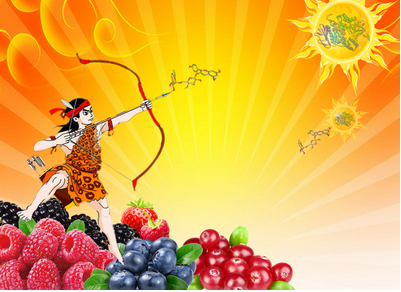Red raspberry may help lower your blood sugar after a meal
Postprandial hyperglycemia is a condition that extremely high blood glucose occurs after eating a meal, which is a typical symptom of diabetes mellitus, a chronic metabolic disease affecting 371 million people worldwide. At present, alleviating postprandial hyperglycemia is a key strategy for the treatment of diabetes and its complications. α-Glucosidase inhibitors (AGIs), which prevent postprandial hyperglycemia by delaying the digestion of carbohydrates in the gut, are usually employed for controlling blood glucose levels after meals. Unfortunately, utilization of clinical AGIs (acarbose, miglitol and voglibose) often leads to severe gastrointestinal adverse effects such as abdominal discomfort and flatulence. As a consequence, searching for natural AGIs without side effects from natural sources has riveted immense attention in the past decade.
The research team led by Prof. CHEN Wei from the College of Biosystems Engineering and Food Science, Zhejiang University conducted a two-year study on the structure-activity relationships (SAR) for inhibition of α-glucosidase by natural anthocyanins. Researchers developed a novel strategy for the isolation of anthocyanins via a combination of high-speed counter current chromatography (HSCCC) and HPLC techniques. Using this strategy, a novel α-glucosidase inhibitor—pelargonidin-3-O-rutinoside (Pg3R), a natural anthocyanin—was isolated from Rubushirsutus Thunb. and strawberries. Experiments proved that Pg3R is featured by salient α-glucosidase inhibitory activity, thus effectively reducing postprandial hyperglycemiain mice.
Their finding is published as a cover article in the journal of Chemical Communications.

“When patients suffering from diabetes or abnormal postprandial glycemia digest plenty of carbohydrates, the excessive amount of glucose derived from α-glucosidase will do damage to their health. Pg3R can be employed to inhibit α-glucosidase activity, thereby mitigating postprandial glycemia,” CHEN Wei explained.
In this study, researchers purified 18 monomeric anthocyanins from berries and employed such technologies as fluorescence spectroscopy, circulardichroism spectroscopy and molecular docking to amplify on the SAR for inhibition ofα-glucosidase by natural anthocyanins.
In summary, researchers identified a potent α-glucosidaseinhibitor (Pg3R) that can improve postprandial hyperglycemia, and for the first time provides a deep insight into the SAR of α-glucosidase inhibitory activity of anthocyanins. Also, they devised an effective protocol to isolate monomeric anthocyanins from natural sources, which is beneficial for expanding the market of anthocyanin standards as well as promoting research on its biological activities.